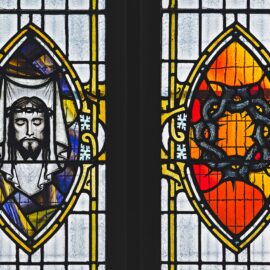

This article is an excerpt from the Shortform book guide to "Team of Teams" by Stanley McChrystal. Shortform has the world's best summaries and analyses of books you should be reading.
Like this article? Sign up for a free trial here .
Who is Abu Musab al-Zarqawi? What was the sequence of events that has lead to his capture? What does Zarqawi’s death mean for the insurgency?
Abu Musab al-Zarqawi was the leader of Al Qaeda franchise in Iraq (AQI). He is regarded as one of the most destructive militants in the history of the Sectarian conflict. Zarqawi’s death became an important military and symbolic event in the history of fighting against the terrorist insurgency.
Read about the sequence of events that has lead to Abu Musab al-Zarqawi’s death.
Abu Musab al-Zarqawi’s Death
In spring 2006, the US task force units captured a dozen AQI fighters in a raid on a farmhouse—U.S. intelligence analysts soon identified several of them as not merely fighters but mid-level AQI operatives potentially connected to terrorist leadership.
Interrogators homed in on one particular operative, Allawi (not his real name), and brought the vast, now-networked task force resources to bear on determining what he knew. Finally, in mid-May, Allawi revealed the name of Zarqawi’s spiritual adviser, Sheikh Abd al-Rahman, with whom the terrorist leader had regular in-person contact.
When they located and identified Rahman, the task force surveilled him around the clock. After 17 days of 24/7 surveillance, the task force observed Rahman relocating his family to another residence, which (Allawi had told them) meant he was planning to leave the city to meet with Zarqawi.
With air surveillance, task force members in eight time zones watched Rahman leave Baghdad; they saw him being dropped off outside Baghdad and picked up by a blue truck. Arriving in the nearby province capital, he entered a small restaurant through one door and left through another door to get into a white pickup.
The white pickup with Rahman inside drove to a small house and entered a driveway connected to the main road. A man in black robes came out and escorted Rahman inside. Analysts observing the scene confirmed the man was Zarqawi.
Successful Strike
At the task force headquarters at the former Baghdad airport, US task force commander dispatched a commando force to the house from Baghdad. As a backup plan, he also ordered F-16s to prepare to bomb the location.
The commando force was delayed by helicopter maintenance issues, and the commander quickly switched to Plan B—the F-16s—but one was offline for refueling. Finally, a second F-16 reached the house and blew it up. When the commando force arrived a half-hour later, they found medical personnel with a still-alive Zarqawi on a stretcher. An American medic, understanding Zarqawi’s value to interrogators, tried to save his life, but the terrorist leader soon died on the scene.
Task force units across Iraq immediately struck multiple targets including 14 in Baghdad, in an effort to hit each one before word of Zarqawi’s death spread to AQI operatives and caused them to flee. These strikes yielded intelligence revealing further connections among terrorist groups and leading to new raids.

———End of Preview———
Like what you just read? Read the rest of the world's best book summary and analysis of Stanley McChrystal's "Team of Teams" at Shortform .
Here's what you'll find in our full Team of Teams summary :
- How General Stanley McChrystal transformed the U.S. Joint Special Operations Task Force
- What teams that operate well can offer to an organization
- How the team of teams organizational model helped bring down a major Al Qaeda leader






